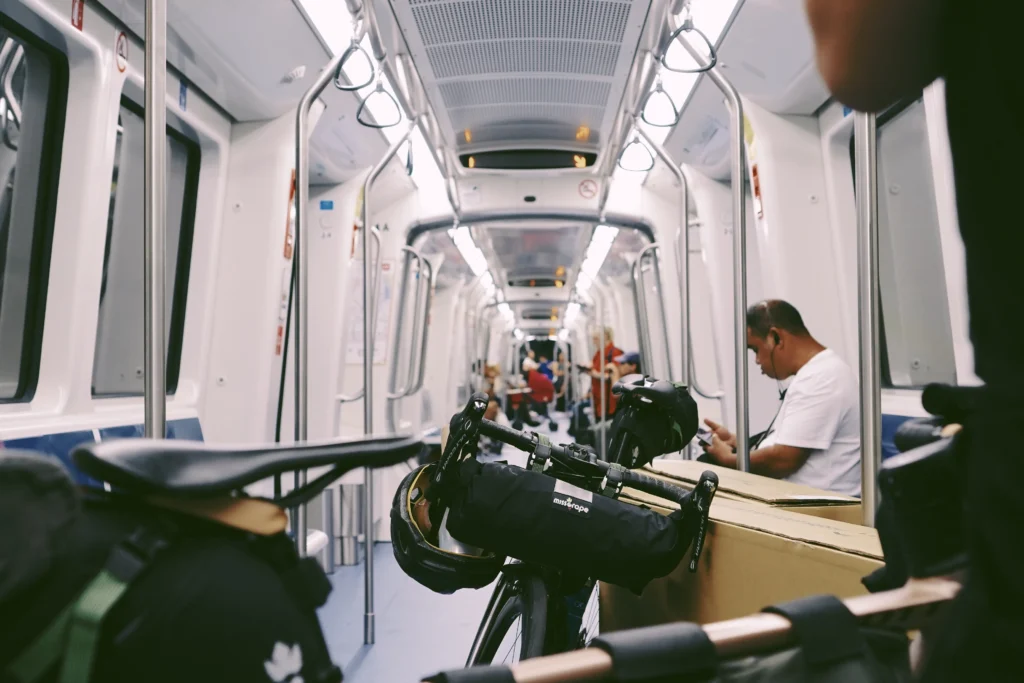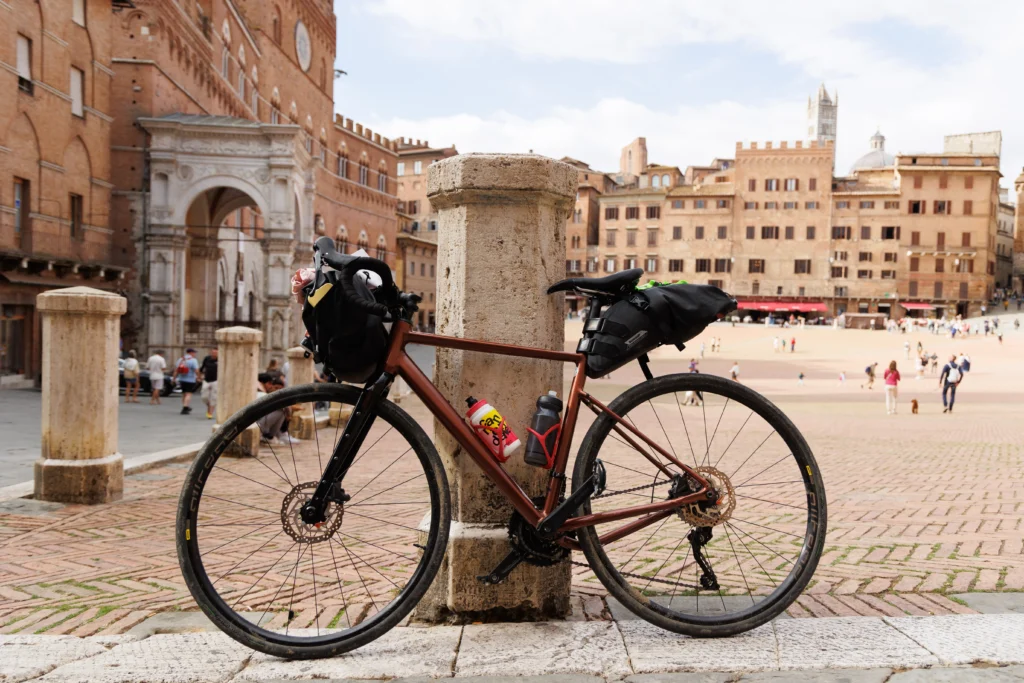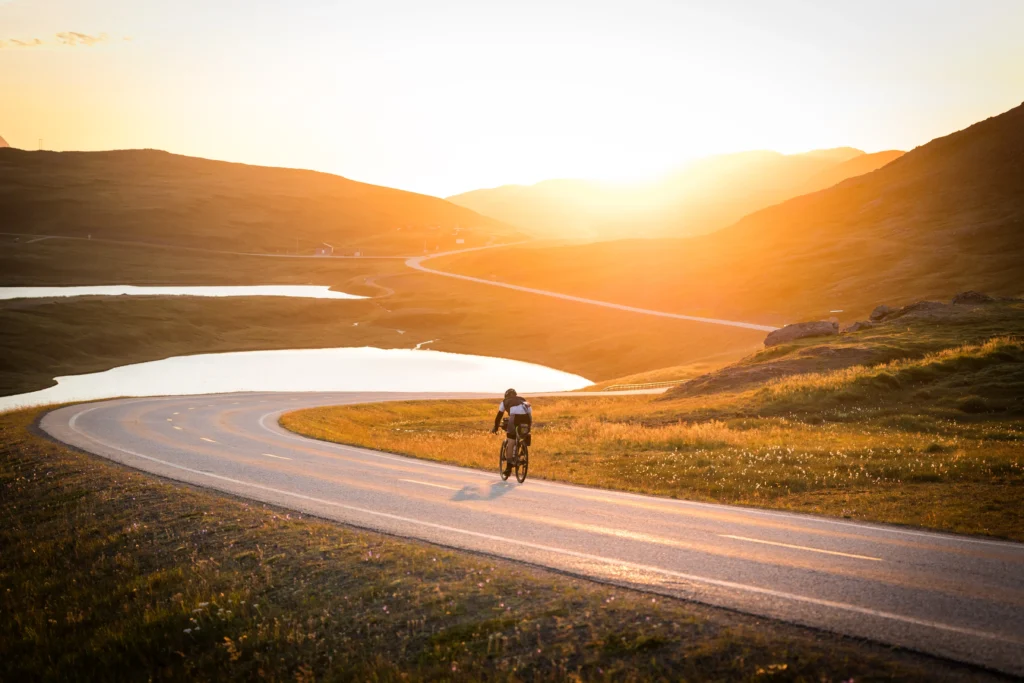
Start your next adventure as soon as you land
We have already covered how to travel sustainably with a bicycle, and when it comes down to it, the train is always our first choice both for confort and sustainability. In some cases, however, the train is not enough and you will have to take a plane with your bike. Let’s be honest, traveling by plane with a bike doesn’t appeal to anyone, but over the years we have spent countless hours mastering the art of transporting our bikes around the world, and we are here to share all of our secrets with you. Follow this step-by-step guide and you’ll be ready to start your next adventure as soon as you land!
1. Bags and Boxes
The first key decision is how to pack your bike. Here are the options we have personally tested:
- Cardboard Boxes: Our favorite method for occasional trips. They are cheap (often free at local bike stores) and surprisingly durable. Pro-tip: Keep a folding one at home for future trips!
- Soft Bags: Ideal for frequent travelers. They are lightweight and easy to carry, but offer decent protection. We use them for our most frequent trips.
- Hard Cases: The Rolls-Royce of bike transportation. They offer maximum protection, but are heavy and expensive. We recommend them only if you travel very often with your valuable bike.
Generally speaking, it is best to go for the cardboard box, this way you will not have to deal with the storage of the bag and you can call local bike shop to get one for the trip back home.

2. Preparing the Bike
Here’s how we prepare our bikes for travel, based on years of experience (and a few mistakes!):
- Disassembly: Remove wheels, pedals, saddle tube and handlebars. Depending on your box and bike size, you could just remove the bolts from the front plate in your handlebar and turn the handle bar on the side or inside the fork.
- Protection: We use foam tubing, bubble wrap, and even our clothes to protect delicate parts. Don’t skimp on protection, especially on the rear derraleur. It’s best to protect the more fragile parts with a extra layer of rigid cardboard.
- Disc Brakes: We put a piece of cardboard or a special separator between the disc brake pads. This little trick has saved us from many problems!
- Tires: We deflate them below 1 bar, but not completely. This reduces the risk of damage without compromising the structure.
- Fastening: Make sure all parts are securely fastened to avoid movement during transport.
Consider using an airtag or smartag to keep track of your bike, especially if your flight has one or more stopovers. You can attach it to your bicycle or simply put it in the box.
3. Tips for Packing Bikepacking Equipment
Here is how we handle our bikepacking equipment:
- Total Weight: Our goal is always to stay under 30 kg. This allows us to avoid extra costs and makes it easier to transport.
- Hand Luggage: We use one of our bikepacking bags as a carry-on. It is practical and allows us to take some clothes with us, reducing the weight of the main luggage.
- Extra Protection: We put the softer bags between the fork to further protect the frame. It’s a little trick we learned after a few too many scratches!
4. Airline Policies
After many flights, here are our tips to avoid surprises:
- Advance Booking: Always inform the airline that you will be traveling with a bike. Some require advance notice.
- Check Fares: Always check additional fees for transporting sports equipment.
- Labeling: We use paper tape and a marker to write “Fragile” and “Bike Inside” on the box or bag. It may seem trivial, but it makes a difference in how your precious cargo is handled!
5. Reassembling the Bike at Destination
Last step of the trip:
- Essential Tools: We always carry a multitool, hand pump and necessary keys in carry-on or checked luggage.
- Patience: Take time to calmly reassemble your bike at the airport. Rushed assembly can ruin your adventure before it even begins!

Preparation is the key
Traveling by plane with your bike may seem like a challenge, but with a little practice it will become routine. By following these tips from our personal experience here at Bike Adventure Series, you can ensure that your bike arrives safe and sound, ready for your next bikepacking adventure. Remember, preparation is the key to a stress-free trip. Enjoy your ride!
Where do you want to ride next?
Next events:

Tuscany Trail 2025
The biggest and original bikepacking event returns! Registration opens December 3 2025 at 11:00 am

The Grand Escape 2025
Three stunning routes on the best asphalt roads in Europe. Check out this new, no race adventure:


You must be logged in to post a comment.